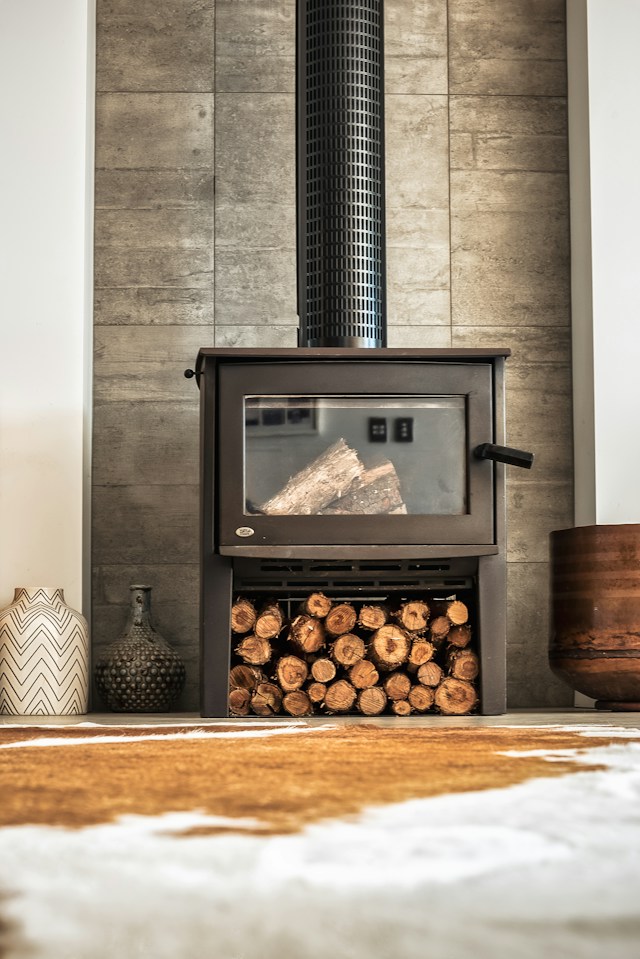Maintaining an indoor fire for efficient heating is not only a practical necessity but a crucial aspect of ensuring the safety and longevity of your heating system. In the unique context of New Zealand, where climates vary and regulations differ, a tailored approach to cleaning and maintaining your indoor fire is essential. This guide provides insights into optimising your indoor fire’s efficiency, considering factors such as wood selection, compliance with local regulations, and the importance of regular cleaning. Whether you have a traditional fireplace or a wood-burning stove, the following information offers a detailed roadmap for a safe, efficient, and environmentally conscious heating experience in New Zealand.
Safety First:
Regular cleaning is essential to mitigate the risk of chimney fires. Creosote, a byproduct of burning wood, can accumulate on the chimney walls over time. This highly flammable substance poses a significant safety hazard, as it can ignite and lead to chimney fires. By undertaking regular cleaning, homeowners remove creosote buildup, reducing the risk of fire and ensuring the safety of both the property and its occupants.
Efficiency and Heating Performance:
A clean and well-maintained fireplace or wood-burning stove operates more efficiently. When the flue and chimney are clear of debris, the airflow is optimised, leading to better combustion. This results in a hotter, more efficient burn, maximizing the heat output and ensuring effective heating for your home. This increased efficiency not only enhances the comfort of your living space but also reduces overall fuel consumption, making it a cost-effective heating solution.
Preventing Creosote Buildup:
Creosote, a highly flammable substance, can accumulate on the walls of the chimney. In areas with higher humidity, where wood may not dry as quickly, creosote buildup can occur more rapidly. Regular cleaning is essential to prevent the buildup of creosote, reducing the risk of chimney fires. Tips for preventing creosote buildup include using well-seasoned wood, ensuring proper ventilation, and addressing any issues with wood drying.
Prolonging the Lifespan of Appliances:
Fireplaces, stoves, and well-maintained chimneys tend to have a longer lifespan. Regular cleaning prevents corrosion and damage caused by the accumulation of ash, soot, and other debris. This proactive approach to maintenance can save homeowners money on repairs and replacements by preserving the structural integrity of the heating system.
Maintaining Indoor Air Quality:
A clean and well-maintained heating system contributes to better indoor air quality. Regular cleaning helps prevent the release of pollutants and particulate matter into the air inside your home. This is particularly important for individuals with respiratory conditions, as it reduces the risk of indoor air pollution-related health issues.
Compliance with Regulations:
New Zealand has regulations regarding emissions from wood burners. Regular maintenance ensures that your heating system complies with these local regulations and emission standards. By adhering to these standards, homeowners not only avoid legal consequences but also contribute to the collective effort to reduce air pollution and promote environmental responsibility.
Inspection for Wear and Tear:
Routine cleaning allows homeowners to inspect their fireplace or wood-burning stove for signs of wear and tear. This includes checking for cracks, rust, or other damage that may compromise the system’s functionality. Identifying and addressing issues promptly can prevent more extensive damage and maintain the efficiency of the heating system over time.
Environmental Impact:
An efficiently burning fire produces less smoke and fewer pollutants, reducing its environmental impact. By practising proper maintenance, homeowners contribute to a cleaner environment and minimize the overall carbon footprint of their heating system. This environmental consciousness aligns with global efforts to address climate change and promotes sustainable living practices.
Enhancing Aesthetics:
Beyond functionality, regular cleaning enhances the visual appeal of your indoor fire. A clean fireplace or stove contributes to a more attractive and inviting living space. This aesthetic improvement can positively impact the overall ambience of the home, creating a cozy and welcoming atmosphere.
Peace of Mind:
Knowing that your heating system is well-maintained provides peace of mind. Homeowners can enjoy the warmth and comfort of their indoor fire with confidence, knowing that it is operating efficiently and safely. This peace of mind extends to the assurance that the heating system is unlikely to experience sudden malfunctions or pose unexpected safety risks.
Reducing Health Risks:
A clean and well-maintained fireplace helps minimize health risks associated with indoor air pollution. Particulate matter, carbon monoxide, and other pollutants can be released into the air during incomplete combustion. Regular cleaning ensures that these emissions are kept to a minimum, promoting a healthier indoor environment and reducing the risk of respiratory issues and other health concerns.

Addressing Pest Issues:
Over time, chimneys and flues can become attractive nesting spots for birds and other pests. Regular cleaning helps identify and address any pest-related issues, preventing blockages and potential hazards. This proactive approach not only maintains the efficiency of the heating system but also ensures a hygienic and pest-free environment within the home.
Optimising Heat Distribution:
Clean and well-maintained heating appliances, such as wood-burning stoves and inserts, distribute heat more effectively. Inspecting and cleaning the components that contribute to heat transfer, such as fans and blowers, ensures that warmth is evenly distributed throughout your living space. This optimization of heat distribution enhances the overall comfort and coziness of your home.
Minimising Odours:
Residual ash and soot can contribute to unpleasant odours in your home. Regular cleaning eliminates these odours, creating a more pleasant living environment. This not only enhances the olfactory experience but also contributes to a healthier indoor air quality.
Educational Opportunities:
Engaging in regular maintenance provides an opportunity for homeowners to learn more about their heating systems. Understanding how your fireplace or stove operates, including its components and potential issues, empowers you to make informed decisions and address minor concerns before they escalate. This educational aspect fosters a sense of responsibility and self-sufficiency in maintaining the heating system.
Preventing Corrosion and Rust:
Ash and moisture can lead to corrosion and rust, especially in the metal components of your fireplace or wood-burning stove. Regular cleaning removes corrosive elements, helping to preserve the integrity of your heating appliance. This preventative measure extends the lifespan of the system and ensures its continued functionality.
Promoting Energy Efficiency:
Cleaning the glass doors and air vents of your wood-burning appliance ensures that it operates at peak efficiency. A clean and unobstructed glass door allows for better visibility and radiant heat transfer, enhancing the overall efficiency of your heating system. This efficiency not only reduces energy consumption but also maximizes the heat output for optimal comfort.
Safeguarding Surrounding Structures:
Regular inspection and cleaning help prevent the buildup of combustible materials around the fireplace or stove. This is particularly important in regions prone to wildfires, where maintaining a clear zone around the heating appliance reduces the risk of fire spreading to surrounding structures. This safety measure not only protects the homeowner’s property but also contributes to the overall community’s fire safety.
Adapting to Seasonal Changes:
In New Zealand, where seasons can vary, adapting your fire maintenance routine to seasonal changes is essential. For example, more frequent cleaning might be necessary during heavy-use winter months, while a pre-season inspection can ensure readiness for colder temperatures. This adaptive approach ensures that the heating system is prepared for the specific challenges posed by different seasons, optimizing its performance year-round.
Community Considerations:
Being mindful of the impact of your wood-burning practices on the community is essential. Smoke from inefficient fires can contribute to air pollution, affecting neighbours and the broader environment.
Regular maintenance helps minimize your contribution to air quality issues and fosters a sense of community responsibility. By taking steps to ensure your heating system operates cleanly and efficiently, you contribute to a healthier and more sustainable living environment for everyone in your community. This collective responsibility aligns with the principles of good citizenship and environmental stewardship.
By incorporating these additional points into your fire maintenance routine, you enhance the efficiency and safety of your indoor fire in New Zealand and contribute to a healthier, more sustainable living environment. Regular cleaning and maintenance not only serve practical purposes but also align with responsible stewardship of your home and its impact on the wider community and environment.

Cleaning a Fireplace:
Materials Needed:
– Ash bucket or vacuum
– Fireplace shovel or ash rake
– Stiff brush or chimney brush
– Drop cloth or newspapers
– Cleaning solution (optional)
– Protective gear (gloves, safety glasses)
Steps:
Clear the Area:
– Remove any decorative items, logs, or debris from the fireplace to give you clear access for cleaning.
Protect the Surrounding Area:
– Lay down a drop cloth or newspaper to catch any debris or soot that may fall during the cleaning process.
Remove Ashes:
– Use a fireplace shovel or ash rake to carefully scoop out ashes from the fireplace. Place the ashes in a metal ash bucket or use a vacuum designed for fireplace ash removal.
Clean the Grate and Tools:
– If you have a grate, clean it from ashes and debris. Wipe down any fireplace tools you use, such as pokers and tongs.
Brush the Firebox:
– Use a stiff brush or a chimney brush to scrub the interior walls of the firebox. This will help remove soot and any buildup on the bricks or lining.
Inspect for Creosote:
– Check for any signs of creosote buildup on the walls of the chimney. Creosote is a highly flammable substance that can lead to chimney fires. If you notice significant buildup, it’s advisable to schedule a professional chimney cleaning.
Clean the Damper:
– Ensure that the damper is functioning correctly. Clean it if needed and make sure it opens and closes smoothly.
Clean the Glass Doors (If Applicable):
– If your fireplace has glass doors, clean them with a fireplace glass cleaner to remove soot and residue. Ensure the glass is completely dry before lighting a fire.
Sweep the Hearth:
– Sweep the hearth area outside the fireplace to remove any remaining dust or debris.
Dispose of Ashes Safely:
– Dispose of the collected ashes in a metal container with a tight-fitting lid. Allow the ashes to cool completely before discarding.
In New Zealand, where the warmth of an indoor fire contributes significantly to home comfort, the importance of proper care cannot be overstated. the importance of cleaning and maintaining your indoor fire in New Zealand extends beyond efficiency to encompass safety, air quality, compliance with regulations, and overall longevity. By selecting appropriate wood, following local regulations, and incorporating regular cleaning and maintenance practices, you not only enhance the efficiency and safety of your indoor fire but also contribute to a healthier living environment.
Establishing a regular cleaning and maintenance routine is a proactive and responsible approach to ensuring the optimal performance of your heating system. If you’re unsure about the best practices or need professional assistance, consider consulting with local chimney sweeps or heating system experts familiar with New Zealand’s specific conditions and regulations. As the seasons change, adapting your fire maintenance routine becomes a proactive measure in preserving the functionality and aesthetics of your heating system. Remember, a well-maintained indoor fire is not just a source of warmth but a cornerstone of safety, efficiency, and community responsibility in the diverse and beautiful landscapes of New Zealand.
